Tidal Exchange


















Executive Director Mark Silberstein looks across the slough from a sandstone bluff atop the 107-acre Sand Hill Farm, the latest piece of property conserved by the Elkhorn Slough Foundation.
The panoramic view extends from the hillside over the slough to the Pacific horizon, revealing the rich patchwork of habitats ESF is working to protect. Below the ridgeline, a tangle of manzanita yields to brushy coastal scrub; rows of strawberries sweeten on sunny south-facing slopes across from shaded oak woodlands; native wildflowers peek out from coastal grasslands that seem to float above the water’s edge; and, at the cosmic center of it all, the estuary winds through tidal marsh and mudflats on its way to the sea.
On a clear day, you can see forever — perhaps into the future.
“Sand Hill Farm is a key piece of the conservation puzzle here, linking the 1,700-acre Elkhorn Slough Reserve with a 3-mile corridor of conserved land in the Elkhorn Highlands. By restoring native habitat and creating a sustainable organic farm, we can protect wildlife, wetlands and water quality in the estuary,” says Mark.
ESF is 80% of the way toward completing the $2 million effort to

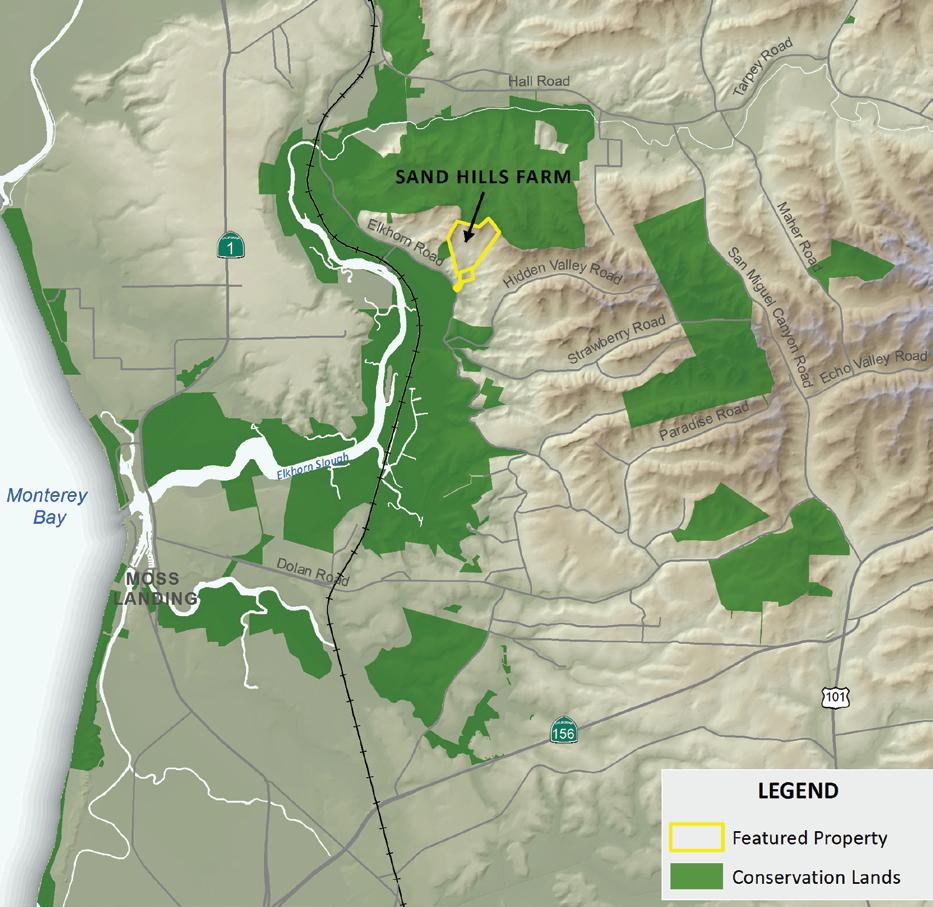





Elkhorn Slough Foundation
Anne Olsen
President
Judith Connor
Vice President
C. Michael Pinto
Treasurer
Robert Hartmann
Secretary
Steven Webster
Past President
Ed Boutonnet
Terry Eckhardt
Sandy Hale
Kent Marshall
Anne Secker
Murry Schekman
Thomas Williams
Mary Wright
Mark Silberstein
Executive Director

Elkhorn Slough Reserve and Elkhorn Slough Foundation welcome you to Evenings at the Estuary — a new event series on topics that will interest, engage, and inspire the community.
The mission of the Elkhorn Slough Foundation is to conserve and restore Elkhorn Slough and its watershed.
We see Elkhorn Slough and its watershed protected forever— a working landscape, where people, farming, industry, and nature thrive together. As one of California’s last great coastal wetlands, Elkhorn Slough will remain a wellspring of life and a source of inspiration for generations to come.
PO Box 267, Moss Landing California 95039
tel: (831) 728-5939
fax: (831) 728-7031
www.elkhornslough.org
Scott Nichols, Editor

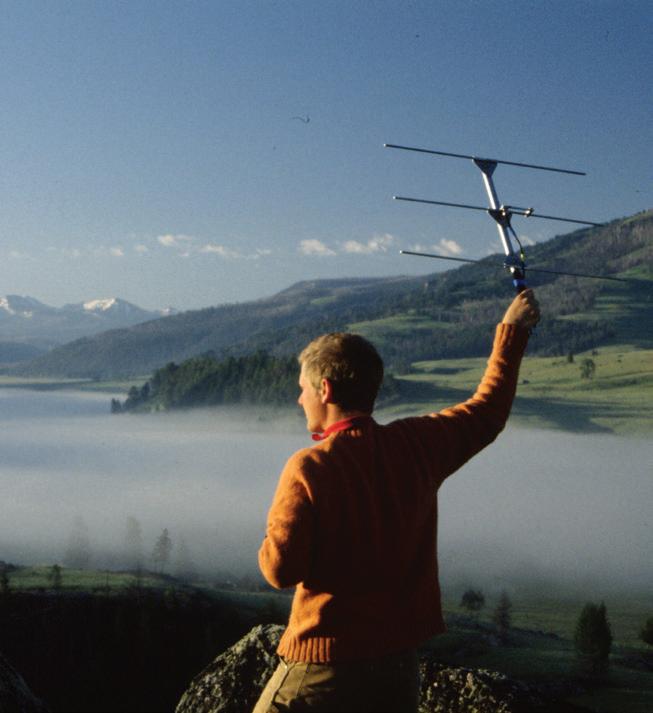

Events in the series are free and open to the public, and will be held at the Reserve after regular operating hours. Each evening will begin with a short nature walk, and the Visitor Center will be open for young ones and their families.
“We look forward to meeting more of our neighbors and engaging with issues that affect our community,” says Reserve Manager Dave Feliz. “We hope these evenings spark some interesting conversations.”
We hope you’ll join us for our inaugural season of Evenings at the Estuary:
August 11 | Changes in a California Estuary: A History of Land Conservation at Elkhorn Slough ESF Executive Director Mark Silberstein will talk about changing patterns of land use in the Elkhorn Slough watershed, highlighting current acquisitions and efforts to conserve this magical place.
November 9 | Pumas in Our Midst
For more information, or to register for an upcoming presentation, please visit our online event calendar at elkhornslough.org/calendar. We look forward to seeing you soon for Evenings at the Estuary! 3 AUG 11
Chris Wilmers, UCSC Wildlife Ecologist and Director of the Santa Cruz Puma Project, will discuss mountain lion tracking and conservation in the greater Monterey Bay region, including information about pumas in the Elkhorn Slough watershed.
February 9, 2017 | Highlights from the Field
ESNERR Research Coordinator Kerstin Wasson will summarize research presented at the Elkhorn Slough Research Symposium (hosted at Moss Landing Marine Labs on January 24), then introduce a featured researcher to discuss their work and findings.










When it comes to oaks, Pamela Muick wrote the book on the subject — or, more precisely, coauthored it. Drawing on her graduate research and restoration projects, she contributed to Oaks of California, a compendium of information and photos that has earned its place on the reading lists and bookshelves of restoration ecologists, backyard botanists, and armchair naturalists.
In the late 1980s, Pam was managing an oak restoration project in the upper Elkhorn Slough on lands then owned by The Nature Conservancy. ESF Executive Director Mark Silberstein, at the time developing outreach and environmental education programs for the newly designated Reserve, met Pamela and brought enthusiastic volunteers to help plant and cage young oaks.
In 2016, Pam visited her restoration site at Elkhorn Slough for the first time in decades, accompanied by her son, Jesse, who was just a toddler in his mother’s arms when the restoration project began.
A lot can happen in just a few decades…. Pam’s son Jesse is now in his 30s, with a sharp eye, a quick wit, and a career in film and television production. Similarly, the tiny oak saplings Pam planted have matured into mighty oaks, forming the sheltered canopy and rich

soils that will support a diverse ecological community of plants and animals in the dappled light of the understory.
“Such a satisfying sight. These oaks are beautiful and healthy, and even larger than I anticipated,” Pam marvels, as she walks through the woodland she planted from saplings nearly 30 years ago. “They’ve grown above and beyond my expectations.”
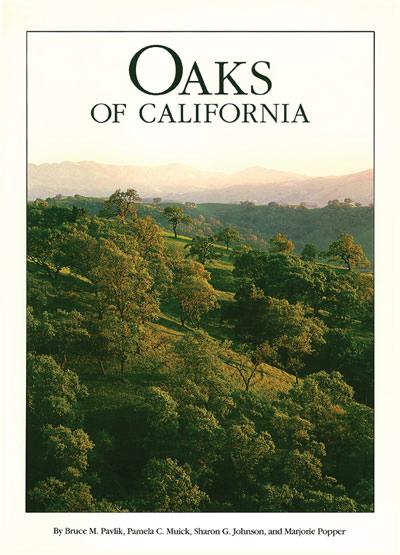
Today, the Foundation owns the uplands above Cowell marsh, where this oak woodland flourishes. The property was part of more than 800 acres transferred to ESF by The Nature Conservancy, which recognizes the Elkhorn Slough Foundation as a legacy partner in conserving the Elkhorn Slough and its watershed.
In their careers, both Mark and Pam have since seen hundreds of saplings grow into mighty oaks — and thousands of acres of land saved and restored. This woodland project may just be a small piece of the conservation picture, but it exemplifies how the seed of an idea can grow — if given sufficient care, nourishment, and, of course, the time to take root. 3
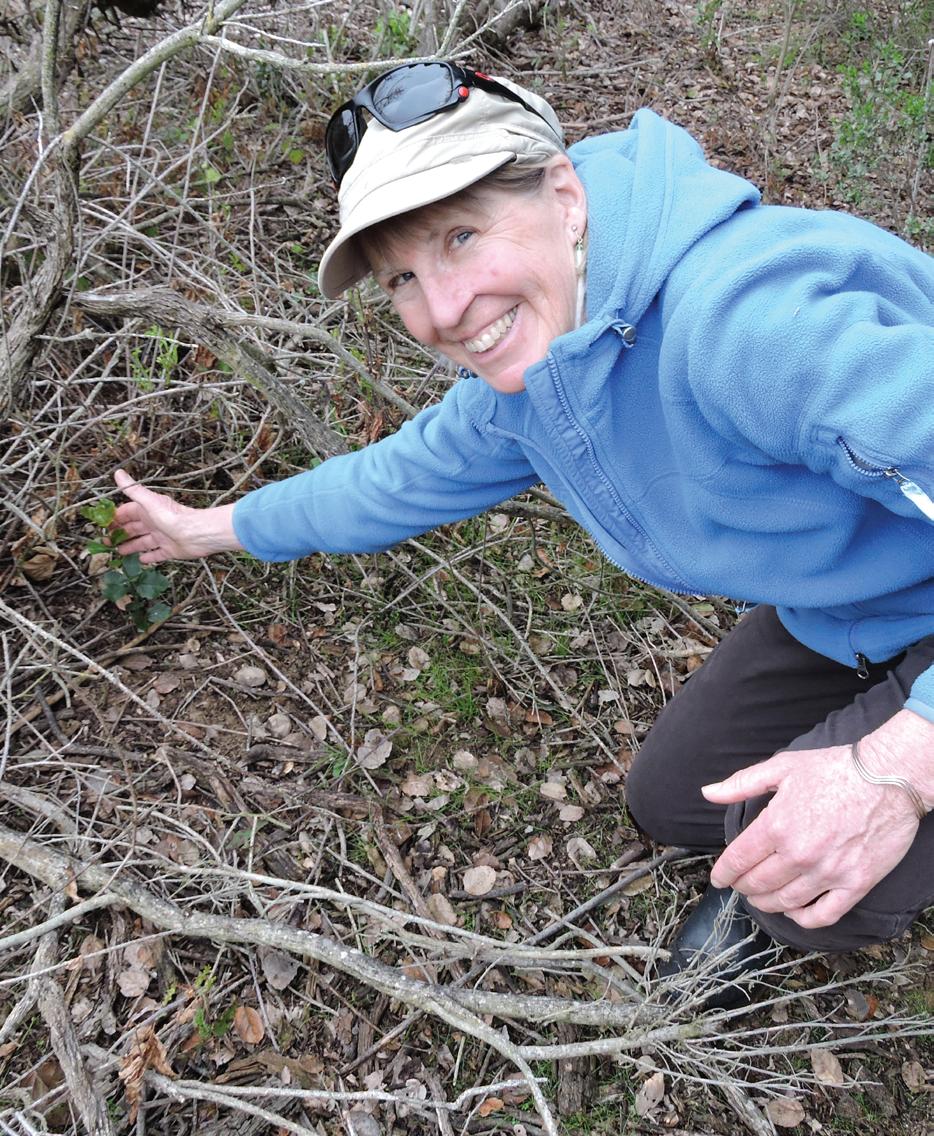


Oak trees represent enduring strength that can span generations. Replanting oak woodlands is a solid strategy in our upland restoration efforts.
Our Adopt an Oak program allows you to support oak woodland restoration in a fun, new way. When you “adopt” your oak, your name will be geo-tagged to a tree that can be shared online using a special link to Google Earth.
As the years go by, you can watch the progress of your adopted tree with every Google Earth image update. Imagine the changes you might see as the oak sapling becomes a mighty oak and habitat for wildlife. Each tree also comes with a digital “Oak Adoption Certificate,” making this a great gift for friends and family.
Yet the best reason to adopt an oak is knowing that you are helping to restore an oak woodland on ESF conserved lands.
We want these little oaks grow into sturdy trees so future generations can admire the ancient oaks of our watershed. Th roughout their lives, these trees will provide habitat for birds, shelter for a variety of wildlife, and an enduring legacy. 3
Give us your best shot!
e Elkhorn Slough 2017 Calendar photo contest begins this June! We’ll be accepting entries through September 7, 2016. For rules and details, visit www.elkhornslough.org.












Many years ago, the rolling coastal grasslands near Las Lomas were grazed by scattered herds of deer, Tule elk, and pronghorn antelope. Native burrowing wildlife, such as ground squirrels, kangaroo rats, and badgers, also turned the soils and transported seeds. In the Pleistocene, Columbian mammoths and other giant mammals likely roamed these hillsides, helping build the landscape we know today as Porter Ranch.



Since the early 1800s, three successive land owners have grazed cattle here — first the Vallejo family on their Rancho Bolsa de San Cayetano land grant; then the Porter Family, who eventually donated their working lands for conservation; and today under the land stewardship of the Elkhorn Slough Foundation.





Today, managed grazing plays a critical role in maintaining healthy coastal prairie at Porter Ranch. Without rotational grazing, in which cattle are brought to new pastures at seasonal intervals, tall grasses — particularly exotic invasive varieties such as Harding grass — overgrow and smother native wildflowers and other forbs (the collective term used by grassland ecologists to describe flowering plants that are not grasses, rushes, or sedges).


Our grazing license has specific requirements to protect threatened species and to enhance conservation of endangered coastal prairie. The Foundation works
with rancher Allan Renz of Tres Pinos, who comes from a five-generation ranching family with longstanding ties to Porter Ranch and dedication to conservation grazing. In early May, Allan and his grandfather, Al, delivered twenty pregnant cows to Porter Ranch as the first arrivals in a cow-calf operation.

Visitors to Porter Ranch saw firsthand how tall grasses loomed over the wildflowers this spring. Next year, the cattle will have trimmed the grasses, thinned the thatch, fertilized the soil, and worked in seeds so native wildflowers can flourish. 3







It’s not lost on Mark Silberstein that one of the great conservation pioneers, Aldo Leopold, developed the concept of the land ethic during decades of work restoring a worn out sand hill farm in Wisconsin. Leopold articulated the idea that we have a responsibility to care for the lands and waters that sustain us.
“A key part of the Foundation’s vision is to support a dynamic working landscape where people, farming, industry, and nature thrive together,” says Mark. “In the footsteps of people like Aldo Leopold, the Foundation is providing on-the-ground evidence that caring for the land benefits both the economy and the broader environment.”
Approximately 25% of the acreage in the Elkhorn Slough watershed is in farming or ranching. The combination of well-drained soils, a mild Mediterranean climate, and seasonal coastal fog allows year-round production of crops including strawberries, raspberries, flowers, and artichokes.
From the expansive cultivation along Highway 1 to smaller farms tucked into the hills above the slough, agriculture is a vital part of our economy and culture. One of our goals is to ensure that we can continue the farming tradition on ESF lands in a way that protects downstream wetlands.
ESF ownership allows us to stabilize steep eroding hills, restore native habitat, increase wildlife corridors, reduce groundwater overdraft, and replenish depleted aquifers. Some land is fallowed to ensure its long-term health, while large areas are reconfigured for sustainable farming.
Currently, the Foundation leases six certified organic farms in the highlands around the slough, honoring the value of the fertile land and supporting the local economy, while protecting the slough’s unique and rare native plants and wildlife.
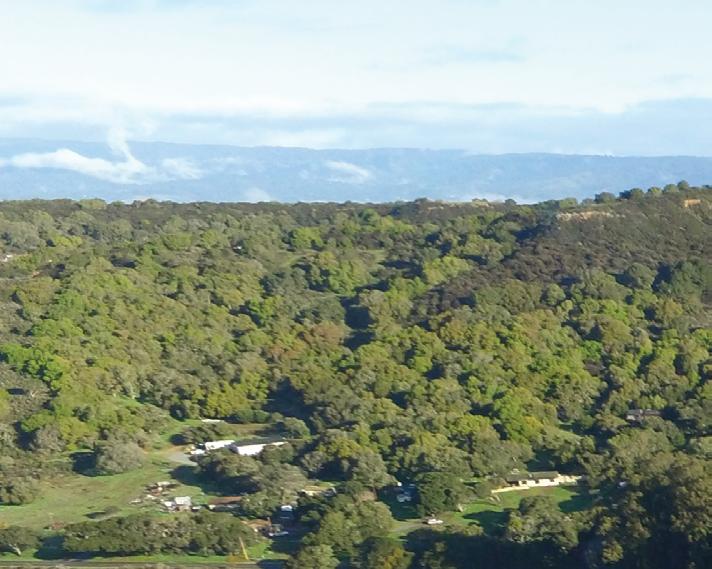


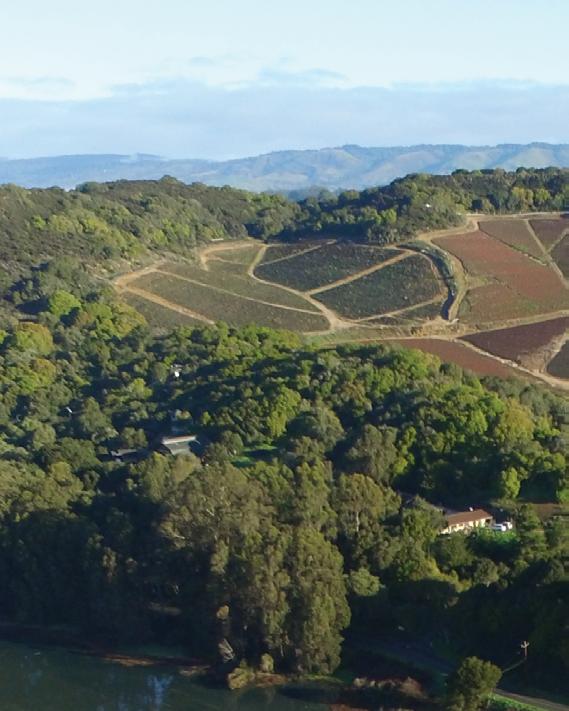
from cover)
fund the project. The California State Coastal Conservancy authorized $1,580,000 toward the acquisition of Sand Hill Farm. Now, the Elkhorn Slough Foundation needs to raise approximately $440,000 in contributions and grants to complete the purchase and restore the land. For though the property includes 25 acres of maritime chaparral and oak woodlands, restoration is needed to protect the slough and replenish groundwater.
“When we see land as a community to which we belong, we may begin to use it with love and respect.”
— Aldo

Leopold, A Sand County Almanac (1949)
“Our goal is to restore Sand Hill Farm as a working landscape — both economically viable and ecologically responsible,” says ESF Stewardship Director Kim Hayes. “We will reduce erosion and sediment runoff from the steep hillsides through native plant restoration and create a sustainable farm footprint, demonstrating the compatibility of farming and conservation.”
Not unlike Aldo Leopold’s endeavors, chronicled in his book A Sand County Almanac, the Foundation’s efforts to repair the land require years of restoration work — and sustained community support. Join us in contributing to the transformation of this remarkable coastal treasure. 3
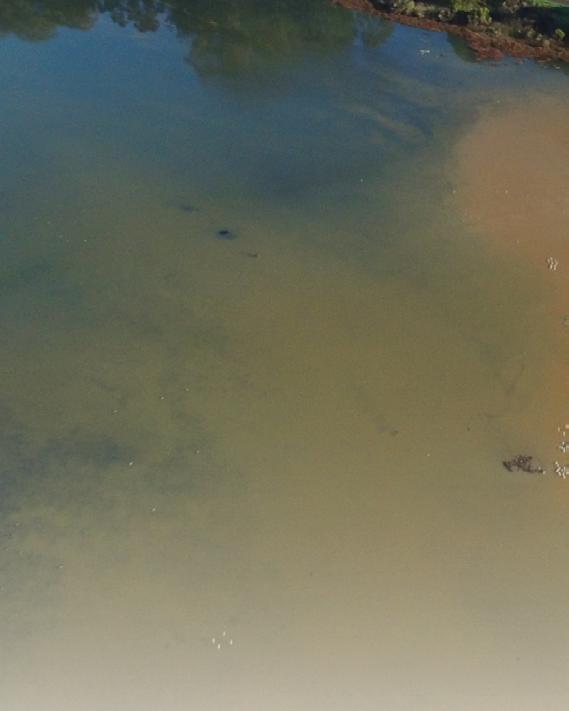

For decades, this land was conventionally farmed. Over the years, the steep, sandy slopes have eroded and deposited sediment into the slough. As ESF takes ownership of the property, our land stewards begin the process of arresting erosion, planting cover crops to stabilize the soil, and establishing best practices for a certified organic farm. Th is is a long job, but the end result will be clean water, healthy food, healthy habitat, and replenished aquifers.
“During escrow, the Foundation has worked with the current owners to fallow steep fields and begin reconfiguring the property,” explains ESF Land Acquisition Manager Kevin Contreras. “The due diligence period gives us an opportunity to identify and address any challenges, and to safeguard the property’s conservation values.”





In June, when ESF takes title to the land, our stewardship team will have a head start on long-term restoration of the property.

“Sand Hill Farm is a key parcel that will make a difference in the overall health of the slough,” says Mark. “We are beginning the Foundation’s next major phase of land protection here, and we look forward to engaging the community in these projects that will truly transform the slough’s landscape and health.”
As we work to conserve and restore this critical piece of our watershed, we look forward to sharing stories of our work and inviting you to tour the property with us. 3
Now more than ever, conservation at the Elkhorn Slough needs your support!
LocatedonMontereyBay,ElkhornSloughandsurroundingwetlandscompriseanetworkofestuarinehabitatsthat includesaltandbrackishmarshes,
Regardless of whether California is facing another drought year, conserving fresh water is an increasingly important issue locally and throughout the state.
Water is a limited resource we rely on for our health, welfare, and quality of life — for everything from drinking water to meal preparation, farm irrigation to municipal sanitation, wildlife habitat to recreation … and the list goes on.
Elkhorn Slough is situated in a groundwater basin that has been seriously over-pumped. In some areas, this has allowed saltwater to seep into aquifers that should supply dependable fresh water to farms, ranches, and residents. By implementing conservation-based land management practices, the Foundation has reduced water use on its 4,000 acres of protected lands by as much as 2,000 acre-feet (about 650 million gallons) of water annually.
(Above) A plume of sediment is deposited into the estuary from Sand Hill Farm after heavy rains; (below) The land and water near ESF’s Blohm property have benefited greatly from restoration, while continuing to support productive farmland.
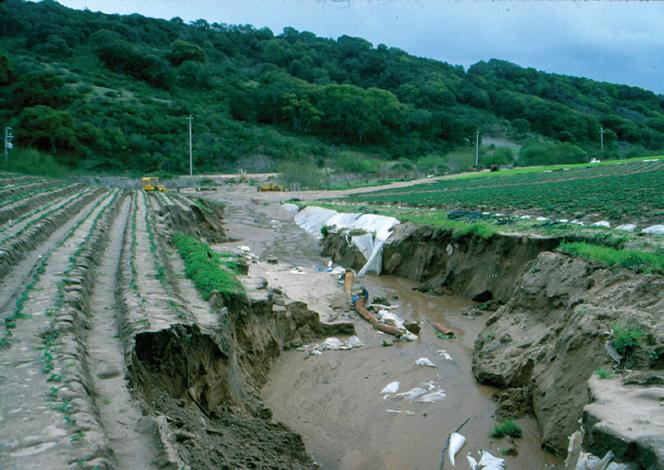

“By retiring the steep, worn-out slopes of Sand Hill Farm, we will save up to an additional 100 acre-feet of water annually,” says Mark. “Th at’s more than 32 million gallons each year, a volume roughly equivalent to 48 Olympic-size swimming pools.”
In addition, repairing degraded lands and implementing sustainable farming practices will reduce the flow of excess nutrients and chemicals into the slough. After restoring natural habitat buffers, removing steep and eroding land from production, and implementing best practices for land stewardship, studies have shown significantly improved water quality in the slough near ESF’s conserved farmlands.
ereareseveralwaysweallcanhelpimprovewater qualityinElkhornSlough:

• Maintainsepticsystemstoavoidleakages.
• Limittheuseoffertilizersinyourgarden.
• Disposeofpharmaceuticalsproperly,andprevent harshsoapsandothercontaminantsfromrunning into storm drains. Buyproducefromlocalfarmersapplyingsustainablemanagementpractices. Votefortheenvironmentbysupportingcandidates andbillsfavoringcleanwaterandhabitatrestoration.
• Letyourelectedrepresentativesanddistrict o cialsknowyoucareaboutwaterqualityin ElkhornSloughandsupporte ortstoreduce pollutedrun-o andtorestorewetlands.
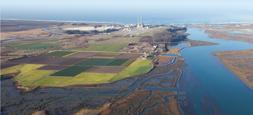



question: How is the water in Elkhorn Slough? answer: It could be a lot better…
Replenishing local aquifers and improving the slough’s water quality is a key benefit of restoring the Sand Hill Farm. Our success will allow future generations to enjoy a new slough view — as well as some cool, clear water. 3
shallowwaters, andnaponthesaltmarshes. Migratoryshorebirdsbythe thousandsstopheretorestandfeedontinycreaturesin themud.Leopardsharksbythehundredscomeintothe estuarytogivebirth.ousandsofpeoplecometoElkhornSlougheachyear toenjoythenaturalresourcesoftheestuary. eykayak, boat, sh,hike,birdwatch,photograph,andstudythe wildlife and habitats. functions–elandsaroundtheestuaryarededicatedtoavarietyof naturereserves,residentialareas,farms, researchorganizations,andanactiveharbor,powerplant, and railroad.
• A endmeetingsoftheCentralCoastRegional WaterQualityControlBoardtoshareyour concernsandsupportforaction.
To make a donation to protect and restore Sand Hill Farm and other critical watershed lands, use the enclosed postage-paid reply envelope or visit elkhornslough.org.
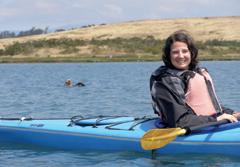
eElkhornSloughNationalEstuarineResearch Reserve - a combined e ort of the California DepartmentofFishandWildlife,theNationalOceanic AtmosphericAdministration,andtheElkhornSlough Foundation-isdedicatedtoconductingresearchto beimplementerunderstandwaterqualityandestuarineecology, saltmarshrestorationprojects,andincrease
about
ElkhornSloughestuaryhostsdiversewetlandhabitats, wildlifeandrecreationalactivities.Suchdiversitydepends toagreatextentonthequalityofthewater.Goodwater qualitysupportshealthyanddiverseecologicalcommunitieswhilepoorwaterqualityisharmfultowildlifeand habitats.Waterqualitymonitoringatover20wetlandsiteshas identi edareasofpoorwaterqualityandthefactors contributingtothesepoorconditions. Workingtogether,wecansupporte ortstoimprovewater qualitysoourwetlandscansustainhealthierhabitats,more abundantwildlifeandmoreopportunitiesforpeopletoenjoy them.




with questions or comments.
Download the updated 2015 Elkhorn Slough Estuary Water Quality Report Card at elkhornslough.org.
Based on ESNERR’s long-term monitoring data, the grades suggest that land restoration near wetlands and improved management of water control structures can greatly enhance water quality in the estuary.


I have spent my career as the Chief Financial Officer for non-profit organizations. This, of course, meant when I joined the board of the Elkhorn Slough Foundation I would be the natural choice to serve as treasurer.
What I’ve seen at ESF is a staff managing nearly 4,000 acres of conserved land, reaching out to engage the community, and supporting the Elkhorn Slough Reserve with consistently high quality on a limited budget.
With assets of more than $30 million, the Foundation remains strong, and with a diversified stream of revenue — including generous donors, grants, leases, investments, and endowment income — the financial outlook is favorable.

I believe I speak for the entire board in stating that we are confident in the Foundation’s financial position, its strength and transparency.
At right, we present a brief summary of ESF’s standing for our most recently completed fi scal year, illustrating that your commitment and contributions are well placed. With your support, we are protecting a magical place that has inspired — and will continue to inspire — generations. Thank you! 3


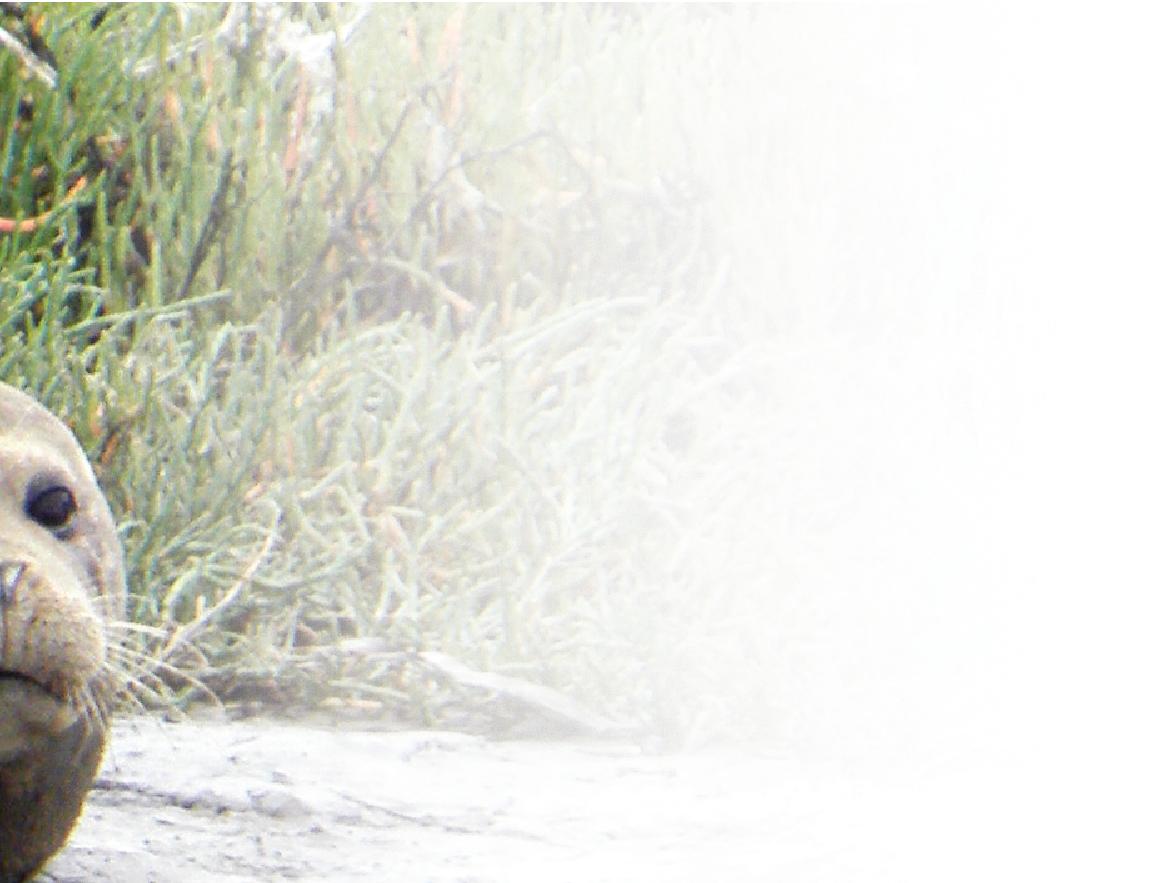













P.O. Box 267
Moss Landing, CA 95039
The Elkhorn Slough Reserve, managed by the California Department of Fish & Wildlife, is open to the public Wednesday through Sunday, 9 am to 5 pm. Join us for one of our upcoming events. For more information, visit www.elkhornslough.org.
• Every Saturday & Sunday: Reserve Tours
Join knowledgeable docents for tours of the Reserve at 10 am & 1 pm.
• First Saturday of every month, 8:30am: “Early Bird” Birding Walks at the Reserve
With local birding expert Rick Fournier. Meet at the Reserve at 8:30 am
• Second Sunday of every month, 2pm: “Slough & Easy” Walks at the Reserve
Call the Elkhorn Slough Reserve at 831.728.2822 for more information
• Wednesday, June 8: World Oceans Day Mud Walk
Early morning on the mudfl ats in search of life, with ESF’s Mark Silberstein
• Thursday, August : Evenings at the Estuary:*
Changes in a California Estuary (*See story, page 2)

Visit ElkhornSlough.org and follow us on Facebook & Twitter for news and updates on upcoming events & more!

